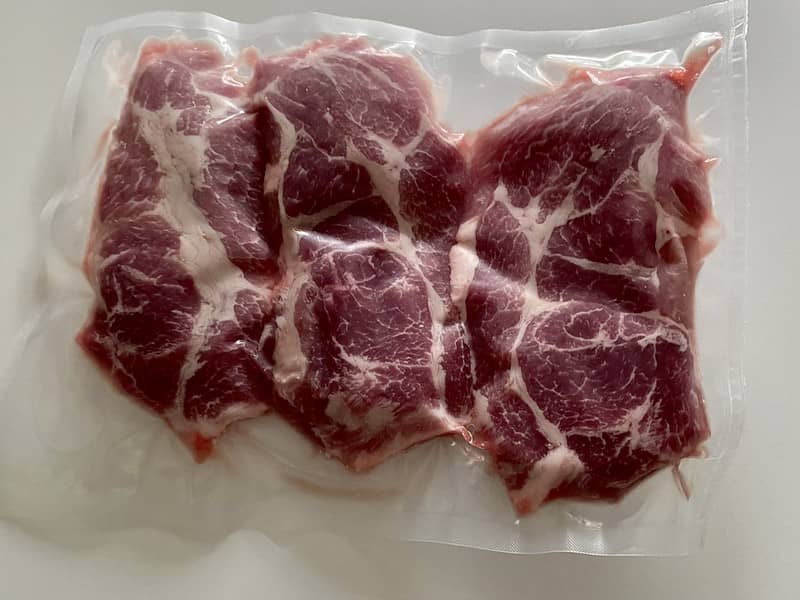
We’ve all been there. You’ve taken out that luscious T-Bone steak you’ve been dreaming about eating and defrosted it completely. Yet you’re just too busy tonight and the next few days to get the grill started up. Can you just toss the steak back in the freezer? It turns out the answer largely depends on how you choose to defrost your meat. The same rules apply not only to refreezing steak but to all kinds of meats. Make sure you’re staying on top of the latest food safety guidelines while still using freezing to keep cooking convenient for you and your family.
Is It Safe to Refreeze Raw Meat that Has Thawed?
Many well-meaning parents have passed down the myth that raw meat can never be refrozen after thawing. While it’s true that it’s not safe to refreeze raw meat in some circumstances, it’s perfectly acceptable in others. However, you will need to prepare for a potential loss in quality no matter what. Even if the meat will be perfectly safe to eat after it’s frozen for a second time, it’s just not going to offer the same experience when you eat it. If you really want to delay enjoying a special steak or other cuts of meat, a slight loss of quality might be worth the extra time.
When is it safe to refreeze meat?
Refreezing thawed meat is only safe if it has been defrosted properly. The safest way to defrost frozen meat of any kind is to place it in your refrigerator and let it slowly come to 42 degrees F or below. This ensures there’s minimal bacteria growth during the thawing period. When the meat is refrozen, it may lose a little color or toughen slightly, but it won’t become unsafe to eat.
When is it not safe to refreeze meat?
Meat that is defrosted any other way must be cooked. If you put meat in cold water, place it on a defrosting tray, or use a microwave to defrost it, you can’t refreeze it due to existing bacterial growth. Cooking kills off these bacteria. Freezing merely stops further growth but can’t help make the meat more safe to eat. It is safe to hold thawed meat for a few days depending on the type, or cook it immediately and freeze it for later use.
The Effects of Thawing and Refreezing Meat
All forms of meat will suffer some kind of quality loss from refreezing. Each subsequent freezing will increase the damage as the water crystallizes to form ice. Even if you only keep a steak or pork roast in your freezer for a few weeks, refreezing it a few times could cause it to become as dry and freezer-burned as meat left in the freezer for years. In general, drier meats and those with lower fat contents suffer more from refreezing than cuts with more natural liquid.
Beef
Ground beef doesn’t handle refreezing very well. The meat will become grainy and lose flavor. If it has a higher fat content around 25% or above, it will likely still be acceptable after a single refreezing. Lean ground beef tends to suffer from even one thawing and refreezing cycle. Larger cuts like marbled steaks and roasts take it much better. On a thick steak, you’re not likely to notice much of a difference after refreezing thawed meat. Keeping roasts wrapped in butcher’s paper and then plastic will minimize drying and color loss from freezing.
Lamb
Lamb is relatively dry meat and tends to have a lower fat level. Both of these things work against it when trying to refreeze it after thawing. The delicate flavor also turns into a less pleasant one after refreezing. When possible, cook up veal or lamb as soon as you thaw it rather than trying to put it back in the freezer.
Pork
Most cuts of pork respond well to refreezing with only minimal flavor loss. Pork chops and ground pork tend to dry out, but shouldn’t get as grainy as ground beef can become. Roasts handle refreezing the best, especially the ribeye roast which has more marbled fat.
Poultry
Chicken breasts in particular become leathery and fairly unpleasant to eat after a few refreezing cycles. They’re easily poached or roasted in the oven plain and then refrozen to cut up for future use in any meal you like. Bone-in and dark meat like the thighs tend to fair better if you must refreeze chicken. Whole turkeys can generally handle refreezing fairly well but don’t expect the bird to last another year in the freezer for the next round of holidays.
How to Thaw Meat Safely
The key to being flexible about cooking or refreezing a cut of meat is defrosting it in a controlled environment. The meat always has to stay below 42 degrees F but above 32 degrees F so it melts without getting too warm. In most homes, the refrigerator is the only place that can guarantee the right conditions. Of course, you may have to wait anywhere from 12 hours to multiple days for meat to defrost this way. Getting used to planning ahead with your meat-based meals will ensure your pork chops or steaks are defrosted by the day you want to use them. If you have to defrost something faster, make sure you’re committed to cooking it up.
Conclusion
Defrosting your favorite steaks and other meat may take extra time if you want to safely refreeze the meat later. You can always fully cook anything you’ve defrosted and then pop it right back in the freezer to enjoy later as well. This works great for keeping cooked meat on hand to quickly chop up for salads, sandwiches, and more.

